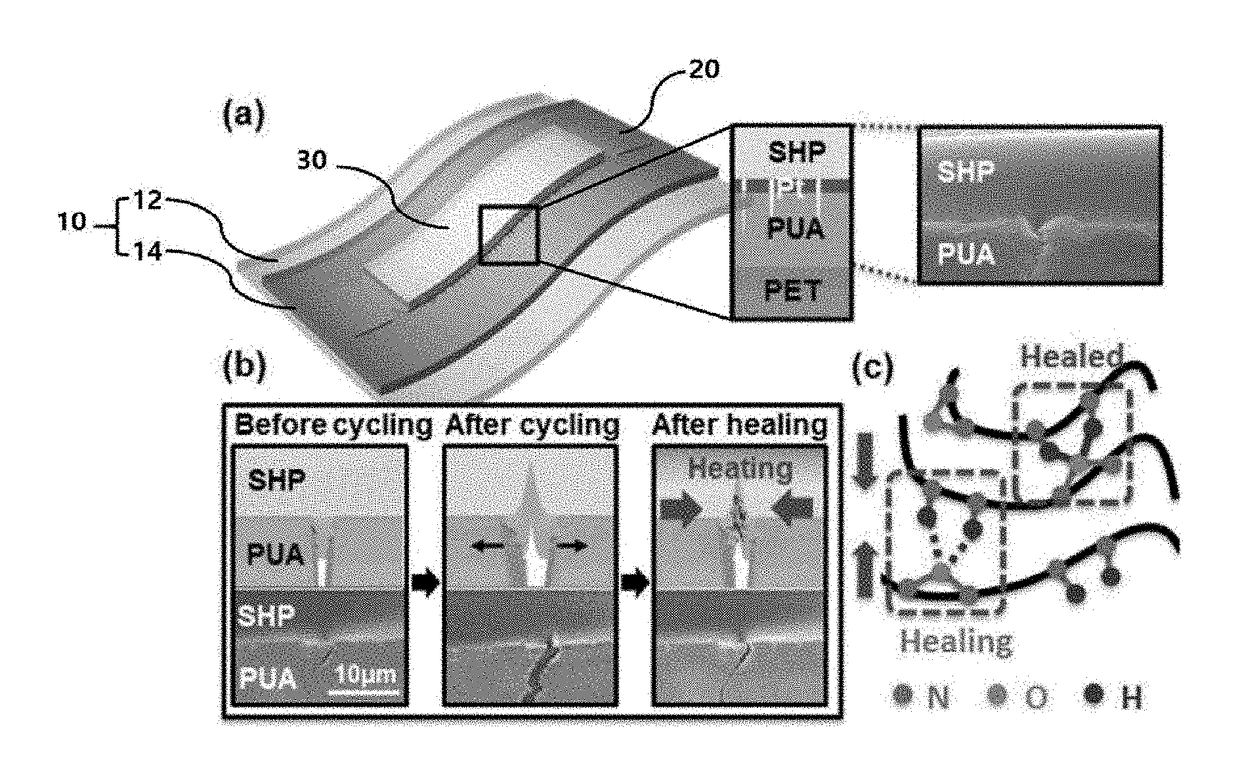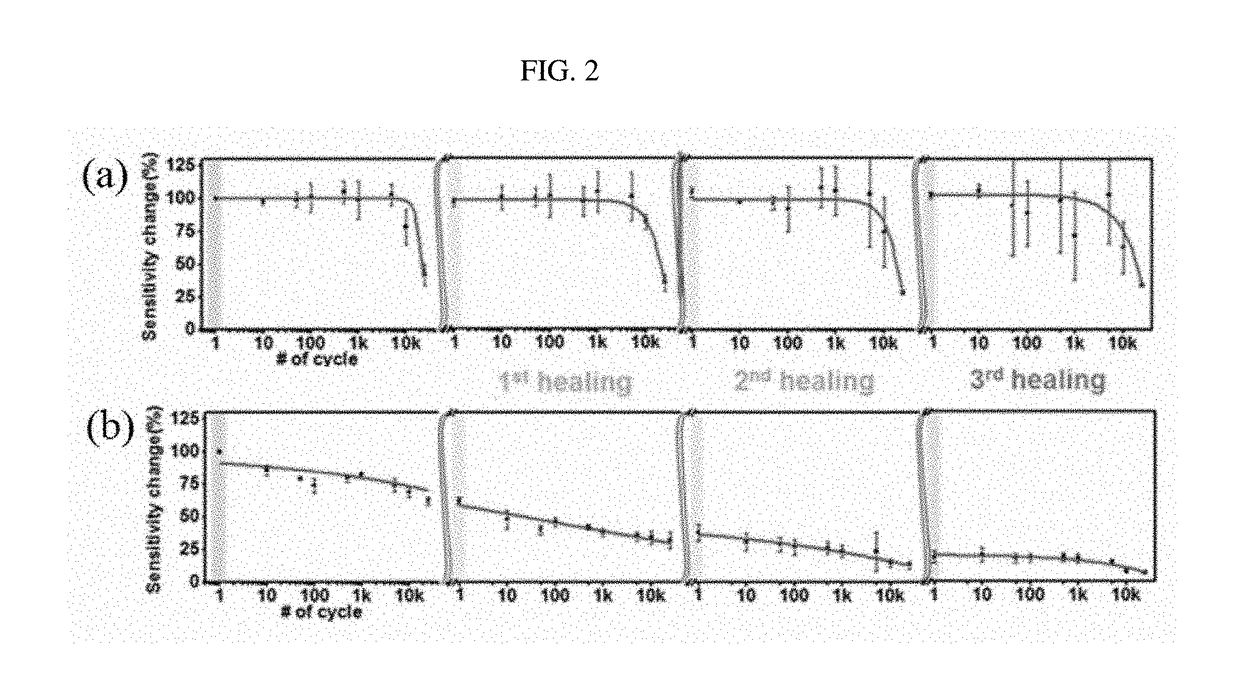Crack sensor including polymer for healing cracks and electronic device including the same
a crack sensor and crack technology, applied in semiconductor/solid-state device testing/measurement, instruments, material analysis, etc., can solve the problems of sensitivity decline, sensitivity and stability decline, and difficulty in detecting accurate signals, so as to achieve low manufacturing cost of the device, simple manufacturing process, and simple structure
- Summary
- Abstract
- Description
- Claims
- Application Information
AI Technical Summary
Benefits of technology
Problems solved by technology
Method used
Image
Examples
example 1
[0071]The restoring force of the healing polymer is created via the hydrogen bond of the functional group formed by the reaction between diacid (Empol 1016, Shijiazhuang Shuliang Commerce Trade Co., Ltd., China) and diamine (diethyelenetriamine).
[0072]First, 41.5 g of Empol 1016 and 17 g of diethyelenetriamine were reacted together under argon vapor at 160-degree C. for 24 hours. Thereafter, 1.5 g of the reaction product is collected. The collected reaction product and 200 mg of urea were reacted with each other at 135-degree C. for 6 hours. As a result, a healing polymer was prepared.
[0073]Furthermore, a 10 μm thick PUA (poly-urethane acrylate) as a soft polymer layer was applied on 50 μm PET (polyethylene terephthalate) as a base layer. On the soft polymer layer, platinum Pt is deposited to a thickness of 20 nm to obtain a stack. Thereafter, the stack was bent using a rod having a curvature of 1 mm to generate cracks to produce a crack sensor. A self-healing polymer (SHP) was coat...
example 2
[0080]To test the performance of a sensor including the healing polymer, a sensor of the present invention including the healing polymer and a conventional sensor were compared to each other.
[0081]Specifically, the sensor manufactured in the example 1 was subjected to 25,000 repetitive tests by applying a force at a rate of 50 mm / min at a strain of 2%, which is the operating range of the sensor. Thereafter, healing was performed three times at an external temperature of 50 DEG C. for 10 minutes. The sensitivity of the sensor is measured, and the result graph is shown in FIG. 2a. For comparison, a repetitive test on a conventional sensor was performed in the same manner, and, then, the sensitivity thereof was measured, and the resulting graph was added to FIG. 2b.
[0082]As shown in FIGS. 2a and 2b, in the case of the conventional sensor, the sensitivity decreased gradually after 1,000 repeated tests. On the contrary, in the case of the sensor having the healing polymer, its sensitivi...
example 3
[0083]To confirm that the sensitivity is recovered, additional experiments were conducted to confirm the change in base resistance affecting the sensitivity. The base resistance value was measured for a crack sensor (self-healing sensor) manufactured in Example 1 and a conventional sensor employed as a comparison example. The results are shown in FIG. 3.
[0084]The restoration of the sensitivity is due to the nature of the base resistance returning to its original value after repeated testing. Depending on the recovery of the base resistance, it is determined whether the sensitivity is restored. As shown in FIG. 3, in the case of the conventional sensor, after repeated testing, the base resistance continued to increase. However, in the case of the sensor including the self-healing polymer, the base resistance returned to the original state after the healing process.
PUM
| Property | Measurement | Unit |
|---|---|---|
| thick | aaaaa | aaaaa |
| thick | aaaaa | aaaaa |
| thickness | aaaaa | aaaaa |
Abstract
Description
Claims
Application Information
 Login to View More
Login to View More - R&D
- Intellectual Property
- Life Sciences
- Materials
- Tech Scout
- Unparalleled Data Quality
- Higher Quality Content
- 60% Fewer Hallucinations
Browse by: Latest US Patents, China's latest patents, Technical Efficacy Thesaurus, Application Domain, Technology Topic, Popular Technical Reports.
© 2025 PatSnap. All rights reserved.Legal|Privacy policy|Modern Slavery Act Transparency Statement|Sitemap|About US| Contact US: help@patsnap.com



